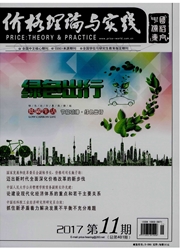

 中文摘要:
中文摘要:
面对中国钢铁行业耗能高、CO2排放量巨大、严重供过于求导致钢铁企业大面积亏损的严峻形势,中国政府推行了淘汰落后产能、推广节能减排技术以及建立全国性碳交易市场等政策.借助长期能源规划平台LEAP(Long-range Energy Alternatives Planning System),建立了LEAP-Policy模型,通过构建1个基准情景和3个政策情景来模拟分析中国钢铁产业政策的效果,并探索2015-2040年中国钢铁行业的节能减排潜力.研究发现:中国钢铁行业存在巨大的节能减排潜力,4个情景的节能减排效果排序为:碳交易市场情景(ET)>缩减产能情景(CEC)>技术推广情景(TI)>基准情景(BAU).碳交易市场情景(ET)2040年的能源需求总量为49亿吉焦,CO2排放总量为3.61亿吨,分别比基准情景(BAU)降低了60.5%和68.4%,节能减排效果最为显著.如果政府制定的产业政策得到有效实施,中国钢铁行业未来的能源消耗和CO2排放量可以得到有效控制.
 英文摘要:
英文摘要:
In order to deal with China's steel industry issues,such as high energy consumption,huge CO2 emissions and serious oversupply led to steel companies' large losses et al,the Chinese government launched a series of corresponding policies,such as elimination of backward production capacity; promote energy saving technology and the establishment of a national carbon trading market policies. With the help of LEAP(Long-range Energy Alternatives Planning System) software,this paper established a LEAP- Policy model. Then based on the production policy of phasing out backward production capacity and the clean production policy of energy saving and emission mitigation technology and climatic change policy of the establishment of carbon exchange market,A basic scenario and three policy scenarios are established for the simulated analysis of the energy saving and emission mitigation potential of China's steel industry. Researches indicate there is great potential for the CO2 emission mitigation in steel industry and the ordering for the effects of 4 scenarios is:carbon exchange market scenario (ET)〉production reduction scenario (CEC)〉technology promotion scenario (TI)〉basic scenario (BAU). The carbon emission trade market scenario is the best scenario with the best emission reduction and reduces energy demand by 60.5% compared to basic scenario (BAU) in 2040,and CO2 emission reduction by 68.4% in 2040.This study reveals that energy consumption and C02 emissions of the iron and steel industry could be lowered significantly if the policies are implemented.
 同期刊论文项目
同期刊论文项目
 同项目期刊论文
同项目期刊论文
 期刊信息
期刊信息
